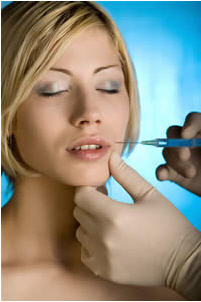What is BOTOX?
Botulinum toxin (BOTOX®) is a complex protein produced by the anaerobic bacterium Clostridium botulinum. It produces a total of seven different toxins all of which have the same end result, the paralysis of muscle. One of the toxins, Botulinum Neurotoxin Type A, is available for medical use under the trade name BOTOX® (USA, Africa) and Vistrabel® (Europe). Advantage can be taken of the effects of BOTOX® to alleviate muscle spasm or to weaken a muscle for therapeutic purposes. In therapeutic applications, minute quantities of botulinum neurotoxin type A are injected directly into selected muscles. BOTOX® treatments of cosmetic conditions require proper identification of the effected muscles.
Is BOTOX® Safe?
Since 1990, success rates of over 90% have been reported in medical literature. Wide attention has been given to BOTOX® and more and more applications have been found for it, often with equally impressive success rates. BOTOX® and Vistabel® is now the treatment choice for dyanamic wrinkles on the face and repeated studies have demonstrated that it is a very safe and effective treatment.
How is BOTOX® or Vistabel® Used?
Injections into the target muscle are carried out by a very fine needle. The sites of the injection will vary slightly from patient to patient, and according to the doctor’s preference.
How Long Does it Take to Work?
Benefits begin in 3-5 days after the treatment and last on average three to four months, after which it can be repeated. All effects of the toxin ultimately reverse with time.
Botulinum toxin for Hyperhidrosis
Hyperhidrosis is a chronic disorder of excessive sweating that may affect any body part, particularly the underarm, palms, soles of the feet and face. This condition can cause significant problems in a patient's private and professional life and has been shown to have a negative impact on the emotional well-being of those suffering from the disease. At I CARE FOR MY BODY we offer BOTOX® for axillary hyperhidrosis.
To treat underarm hyperhidrosis, BOTOX® is administered via tiny injections, within the skin of the affected area, to reduce excessive sweating by blocking the release of the chemical acetylcholine from the nerve fibers that stimulate overactive sweat glands. It can take up to 4 weeks for the treatment to take effect and the average duration of effectiveness is 6 months.
The efficacy and patient satisfaction of BOTOX® is considered to be excellent. Until now, most treatments for hyperhidrosis were often ineffective, short acting or had significant risks. For those suffering from hyperhidrosis, BOTOX® treatments give them new hope where previous therapies have failed before.
BOTOX® treatment for hyperhidrosis was approved in the United Kingdom in July 2001.
What are its Side Effects and Complications?
Many studies have confirmed side effects to be minor in the vast majority of applications. Side effects are generally transitory, well tolerated, and amenable to treatment. They are related to the dose of BOTOX® administered. Persistent complications are distinctly rare, and serious side effects are uncommon. Some of the reported side effects include:
- Flu like symptoms. These are mild and transient.
- Systemic complications are uncommon
Tenderness or bruising at the site of injection, and headaches again mild and transient. - Muscle weakness. This is to be expected in the muscles injected but in practice this is rarely a problem.
- Weakness in other areas is rarely troublesome and is associated with large doses.
- Allergy is a theoretical risk but is virtually unknown.
- Antibodies can be produced and if this happens the toxin becomes ineffective, but there are no other effects. The antibodies often disappear with time and treatment may be successfully recommenced after an interval.
- Other very low incidence of complications of botulinum toxin injections includes droopy eye (ptosis), dry eye and photosensitivity. One of the more common adverse effects, ptosis, is due to diffusion of toxin from the upper eyelid injection sites to the levator muscle.
Although the side effects of the toxin are generally uncommon and not serious there are nonetheless contraindications to treatment with botulinum toxin.
- Pregnancy and lactation.
- Infection in the vicinity of the injection site.
- Current therapy with a certain class of uncommonly used antibiotics, known as the amino glycosides.
- Blood clotting disorders or current therapy with drugs inhibiting blood clotting, e.g. Warfarin.
- Diseases affecting the muscles, particularly myaesthenia gravis.
Allergy to tetanus toxoid is a potential, but not absolute contraindication.
Please phone the Cosmetic and Ophthalmic Surgery Centre for further details


